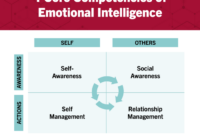Business intelligence vs analytics: two sides of the same data-driven coin. While often used interchangeably, these terms represent distinct disciplines with unique roles in empowering organizations to make informed decisions. Let’s delve into the nuances that set them apart and explore how they synergistically contribute to business success.
When it comes to data analysis, business intelligence (BI) and analytics are often used interchangeably. However, there’s a subtle difference between the two. BI focuses on providing historical data and insights, while analytics goes a step further by using predictive modeling and machine learning to forecast future outcomes.
To leverage these capabilities, many businesses turn to business intelligence software companies that offer a range of tools and services. These companies can help you gather, analyze, and interpret data to make better decisions and stay ahead of the competition.
Ultimately, both BI and analytics are essential for businesses looking to gain a competitive edge in today’s data-driven market.
At their core, both business intelligence and analytics leverage data to provide valuable insights. However, business intelligence focuses on descriptive and diagnostic analysis, helping businesses understand what has happened and why.
Analytics, on the other hand, takes a more predictive and prescriptive approach, enabling organizations to anticipate future trends and make data-driven decisions.
1. Definition and Overview
Business intelligence (BI) is the process of transforming raw data into meaningful information that can be used to make better business decisions. Key components of BI include data collection, data analysis, and data visualization.
Business analytics is a more advanced form of BI that uses statistical and predictive modeling techniques to uncover hidden patterns and trends in data. It helps businesses identify opportunities, make predictions, and optimize their operations.
Both BI and analytics rely on data to provide insights, but BI focuses on historical data for descriptive and diagnostic purposes, while analytics uses predictive and prescriptive techniques to explore future possibilities.
Understanding the difference between business intelligence and analytics is crucial for effective data-driven decision-making. Business intelligence provides historical data and insights, while analytics delves deeper into predictive and prescriptive analysis.
To gain a practical understanding of business intelligence dashboards, explore our comprehensive guide to business intelligence dashboard examples.
These examples showcase how businesses leverage data visualization to monitor key metrics, identify trends, and make informed decisions, further highlighting the power of business intelligence in driving business outcomes.
2. Data Sources and Management: Business Intelligence Vs Analytics
Data Sources
- Internal databases (e.g., CRM, ERP systems)
- External data feeds (e.g., social media, market research)
- Unstructured data (e.g., text documents, images, videos)
Data Quality and Governance
Ensuring data quality is crucial for effective BI and analytics. Data governance policies and practices help maintain data accuracy, consistency, and reliability.
Data Preparation and Transformation
Data preparation involves cleaning, transforming, and integrating data from multiple sources to make it suitable for analysis.
3. Data Analysis Techniques
Descriptive Statistics

Provides summary statistics (e.g., mean, median, standard deviation) to describe data characteristics.
Predictive Modeling
Uses statistical models to predict future outcomes based on historical data (e.g., regression, decision trees).
Machine Learning
Employs algorithms to learn from data and make predictions without explicit programming (e.g., neural networks, support vector machines).
Visualization and Data Storytelling
Visualizing data and presenting insights effectively helps communicate complex information and drive decision-making.
4. Tools and Technologies
Data Warehouses, Business intelligence vs analytics
Centralized repositories that store and manage large volumes of data for analysis.
Business intelligence and analytics are two closely related terms, but there are some key differences. Business intelligence is the process of gathering, analyzing, and presenting data to help businesses make better decisions. Analytics, on the other hand, is the process of using data to identify trends and patterns.
Business intelligence reporting software can help businesses gather and analyze data to make better decisions. This software can also help businesses track their progress and identify areas where they can improve.
Data Lakes
Scalable storage systems that store raw data in its original format for future processing.
Analytics Platforms
Software tools that provide data analysis, visualization, and reporting capabilities.
Latest Trends and Innovations
Cloud computing, artificial intelligence, and data fabric are driving advancements in BI and analytics technology.
5. Applications and Use Cases
Improved Decision-Making
BI and analytics provide data-driven insights to support better decision-making across all business functions.
Increased Efficiency
Automated data analysis and reporting streamline operations, reducing manual effort and saving time.
Competitive Advantage
Businesses that effectively leverage BI and analytics gain a competitive edge by identifying opportunities and optimizing their strategies.
Challenges and Limitations
Data quality issues, data security concerns, and the need for skilled professionals are challenges in BI and analytics implementation.
Conclusion

In the ever-evolving landscape of data-driven decision-making, business intelligence and analytics have emerged as indispensable tools. By harnessing the power of data, organizations can gain a competitive edge, optimize operations, and ultimately achieve their business goals. As technology continues to advance, we can expect these disciplines to evolve and play an increasingly pivotal role in shaping the future of business.
Top FAQs
What is the key difference between business intelligence and analytics?
Business intelligence provides insights into past and present data, while analytics focuses on predicting future outcomes and making recommendations.
How can business intelligence and analytics benefit organizations?
They help businesses make informed decisions, optimize operations, identify opportunities, and gain a competitive advantage.
What are some common data analysis techniques used in business intelligence and analytics?
Descriptive statistics, predictive modeling, machine learning, and data visualization are widely used techniques.




